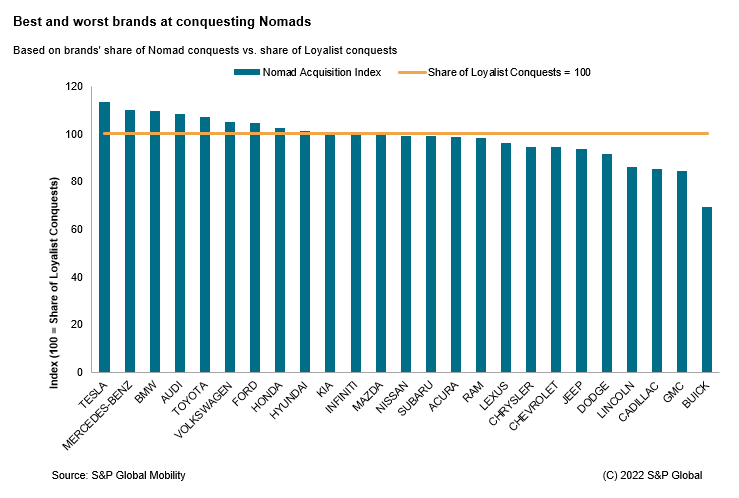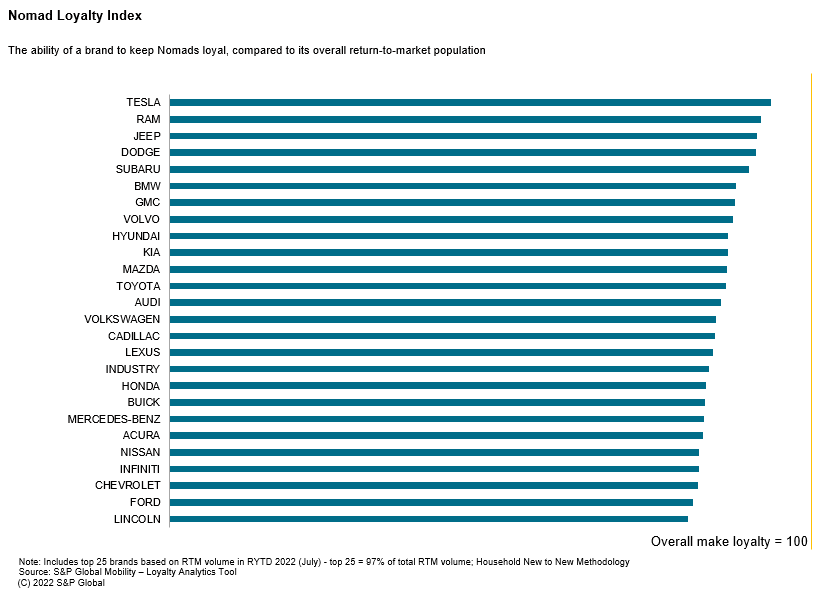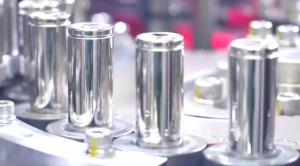More details on the S&P research analysis here:
The trouble with Nomads
Some extracts:
There are three distinct customer loyalty types: Super Loyalists, Loyalists and Nomads. Super Loyalists are consumers with a history of multiple repeat purchases and are most likely to repurchase from the same brand. Loyalists are consumers with a repeat purchase, and Nomads show no identifiable loyalty patterns to any brand and are most likely to defect.
My comment: the defection rate is increasing from other brands and I see a few reasons for this. The first and obvious one is that Tesla is taking market share away from other brands and this defection rate will only increase as Tesla grows. It is also obvious that more and more people are looking to buy an EV for their next vehicle and none of the other brands are able to scale up production to meet that demand. I think another reason is that the other brands are all struggling with technology and software and as cars become more advanced their customers are experiencing more problems and frustration with the user interface in the car.Nomads who own a brand once and leave are also known as 'One and Done' - about 58 percent of Nomads left their brand in the 12 months ending July 2022. That's the highest 'One and Done' rate (defection rate of Nomads) in at least 10 years, according to data analysis by S&P Global Mobility.
My comment: This makes Tesla's ability to retain a higher percentage of customers even more impressive (with such a limited range of vehicles it's even more difficult to retain customers). As Tesla enters more segments of the market (Cybertruck, van, smaller vehicle etc...) this bodes well for future retention of customers. As we all know, Tesla continuously focuses on making the product better rather than wasting resources on marketing to create the 'perception' of a better product.Brands who have a presence in more segments tend to have a lower 'One and Done' rate. Filling a portfolio gap (by launching a vehicle in a key segment) helps brands retain nomads (and customers in general).

(the bolding is mine)While Tesla's high share of first-time owners (83%) isn't too surprising, their ability to keep those new customers is extraordinary. Tesla's 'One and Done' rate is just 39% compared to 58% for the industry (remember, a lower number is better in this case). The next-best 'One and Done' rate goes to Ford at 50%. However, Nomad share of Ford's return-to-market households in less than half of Tesla's.
My comment: because more of Tesla's customers are 'Nomads' that makes it harder for Tesla to retain those customers as they are inherently more likely to defect. This makes it even more impressive that they have managed to turn a greater percentage of those customers into 'Loyalists' and 'Super Loyalists'.

Last edited:




